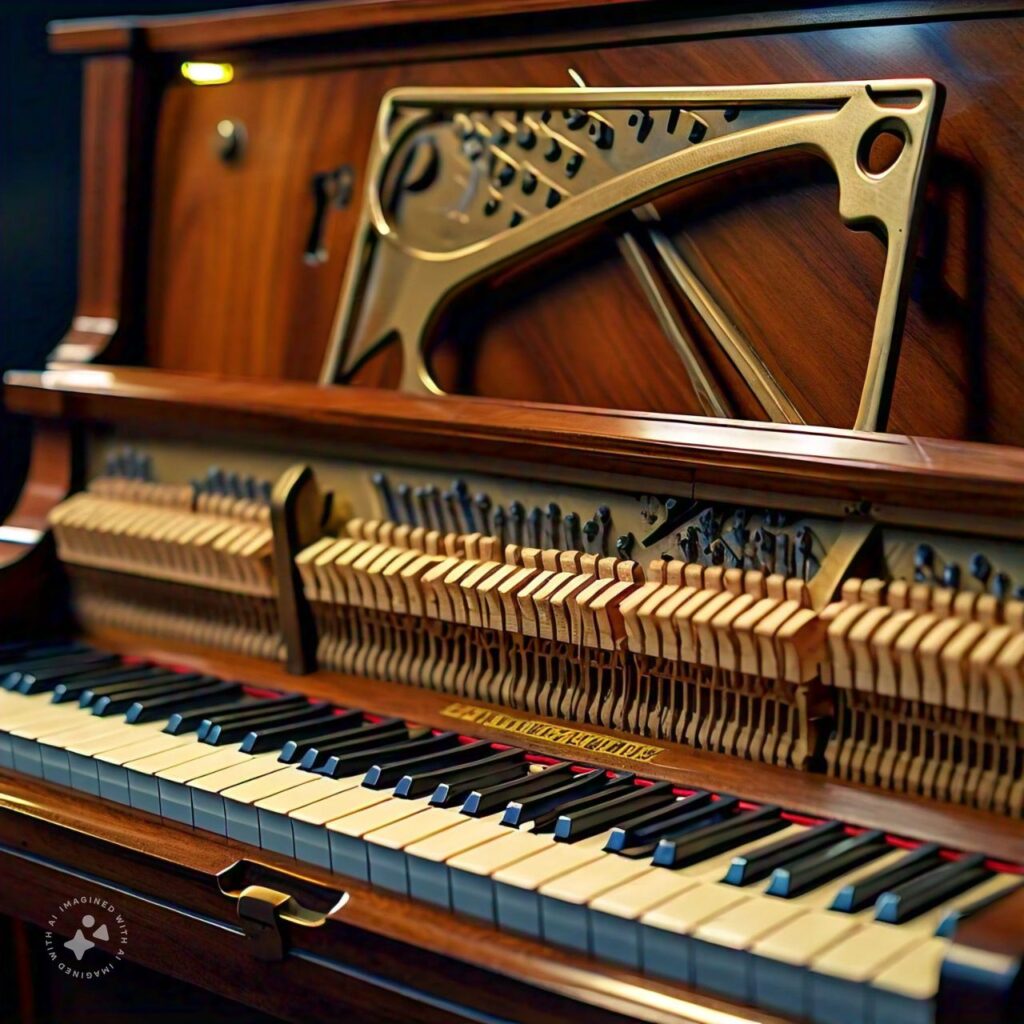Whether you’re interested in becoming a piano technician or just want to learn more about piano tuning, this guide will walk you through the entire process of Best Way To Tune A Piano At Home In 8-Steps.
Table of Contents
A brief introduction:
If you want to create beautiful music, it is important to have a well-tuned piano. Tuning your piano on a regular basis will not only ensure the best sound quality, but it will also extend its lifespan. To adjust the tension of its strings, tuning a piano involves ensuring that each note is at the correct pitch. Despite the fact that this task is often best left to professionals, learning the basics can be both rewarding and educational.
You will need the following tools
The following tools should be gathered before you begin:
- Tuning Hammer: Guitar tuning pins are turned with a tuning hammer.
- Electronic Tuner or Tuning Fork: An electronic tuner or tuning fork is used to determine an instrument’s pitch.
- Mutes: A rubber or felt mute is used to silence neighbouring strings when playing.
- Temperament Strip: A temper strip muffles multiple strings at once with a long piece of felt.
Getting Your Piano Tuned Step-by-Step
Step 1: Understanding the Piano’s Layout
Pianos usually have 88 keys and 230 strings. Each note usually has three strings, except for the bass notes, which have one or two. The goal is to adjust the tension of the strings so that all of the notes sound harmonious.
Step 2: Setting the Temperament
- Choose a Reference Note: Tune A4 (the A above middle C) to 440 Hz as a starting point.
- Use the Electronic Tuner: Place your electronic tuner near the piano and set it to 440 Hz.
- Mute the Outside Strings: You can mute the outside strings with rubber mutes and leave the middle string unmuted for A4.
Step 3: Tune the First Note
- Insert the Tuning Hammer: You will need to attach the tuning hammer to the tuning pin of the string that is unmuted.
- Adjust the Pitch: Turn the pin slowly while striking the key moderately. Adjust until the tuner indicates 440 Hz.
- Remove Mutes: To create a uniform sound, unmute the outside strings and tune them to match the middle string by ear.
Step 4: Tuning the Octave
- Tune Octave Notes: To ensure perfect harmony, tune the A3 and A5 notes (one octave below and above A4) using the same method.
Step 5: Set the Temperament Strip
- Insert the Temperament Strip: As you place the temperament strip under the strings of one octave, typically from F3 to F4, the outer two strings of each note will be muted, leaving only one string available for tuning.
- Tune the Remaining Notes: Use the previously tuned A4 as a reference and tune each note by ear to ensure that they sound harmonious within the octave.
Step 6: Tune the Entire Piano
- Remove the Temperament Strip: Remove the strip once the temperament has been set.
- Tune Using Octaves: Tune each note of the piano according to its corresponding octave. For example, tune B3 to B4, C4 to C5, etc.
- Use Reference Notes: In order to ensure consistency, it is always recommended to use the closest tuned note as a reference.
Step 7: Fine-Tuning
- Play Scales and Chords: It is a good idea to test the tuning by playing scales and chords to ensure it is uniform.
- Make Adjustments: Make any minor adjustments you need to make to any notes that sound off.
- Check Intervals: If you want to ensure that your music is in tune, pay special attention to intervals such as thirds, fifths, and octaves.
Step 8: Final Check
- Test Play: Make sure the piano is in tune and sounds good in all registers by playing various pieces of music.
- Listen Carefully: If there are any notes that don’t sound right, make final adjustments and pay attention to those notes.
Additional Tips for Successful Piano Tuning
Patience and Practice
- Take Your Time: Piano tuning is a meticulous process that should not be rushed. Rushing can result in mistakes if not done correctly.
- Practice Regularly: It is important that you practice so that you can become better at identifying and correcting variations in pitch as you progress.
Environmental Factors
- Stable Environment: It is important to ensure that the piano is kept in a stable environment regarding temperature and humidity because fluctuations can affect the stability of the tuning.
- Regular Maintenance: You should regularly dust and clean your piano to prevent buildup that could affect the sound quality of your instrument.
Professional Help
- Know When to Call a Professional: Consider seeking professional assistance if you notice that your piano is significantly out of tune or has mechanical problems.
- Regular Check-Ups: It is a good idea to have your piano professionally tuned and checked once a year, even if you tune your piano yourself.
Conclusion
When you tune your piano, you will gain a deeper understanding and appreciation for this magnificent instrument. Follow this guide, take your time, and have fun. Once you hear your piano in perfect tune, it will be well worth the effort.

